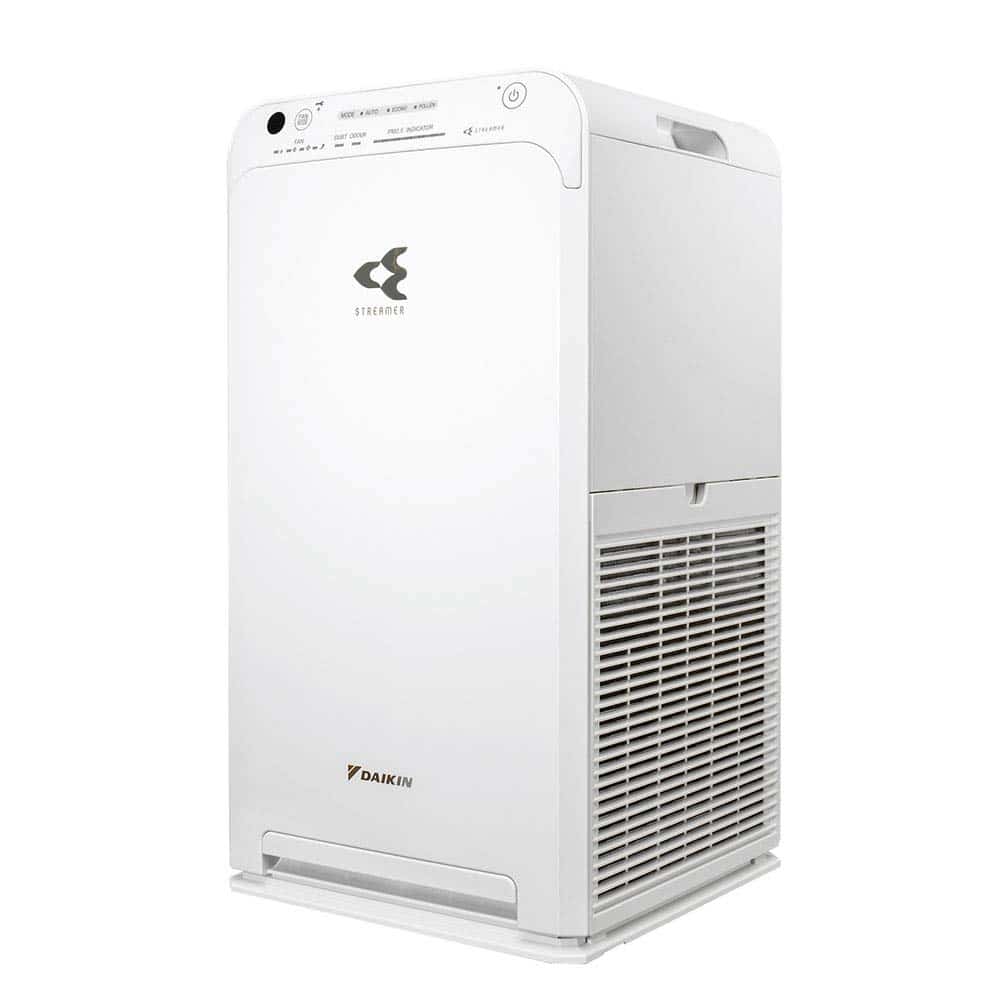Why should the Daikin MC55VB air purifier be your first choice?
 Indoor air quality is a major concern, and air purifiers are becoming increasingly popular as a result. Daikin air purifiers keep their promise to provide cleaner and healthier indoor environments in homes, offices, and commercial spaces all over the world.
Indoor air quality is a major concern, and air purifiers are becoming increasingly popular as a result. Daikin air purifiers keep their promise to provide cleaner and healthier indoor environments in homes, offices, and commercial spaces all over the world.
The Daikin MC55VB air purifier is a high-quality air purifier. With indoor air quality having a significant impact on people’s performance and well-being, Daikin’s air purifier aids in the purification of indoor air by circulating it through the unit and allowing the air to pass through a variety of filters and purifying technologies. The units are commonly found in residential settings, small offices, retail stores, classrooms, medical waiting rooms, and doctor cabinets. (1,785 AED). It’s a great addition for any space because of its compact size and sleek looks. It catches fine dust particles and has a powerful suction system.
The streamer unit, which uses high-powered plasma discharge technology, decomposes harmful substances* within the unit. These contaminants are either trapped on the HEPA filter or adsorb to the deodorising filter element. 2. The Active Plasma Ion generation unit purifies the space further by adding purifying elements to the cleaned air. These could help to deodorise odorous curtains and carpets, for example.
The purifier is equipped with a high-sensitivity dust sensor that distinguishes between small particles like PM2.5 and larger dust particles and reacts accordingly. There is triple detection of dust, PM2.5, and odour.
Furthermore, according to tests conducted at the Institut Pasteur de Lille, Daikin’s air purifier eliminates 99.98 percent of the human coronavirus HCoV-229E in 2.5 minutes. This virus is related to SARS-CoV-2, the Coronavirus that caused the COVID-19 pandemic.
Design Middle East also spoke to Tuna Gulenc, vice president of Daikin Middle East & Africa, as he discussed the emphasis on indoor air quality and why clean air is more important now than ever before.
Air pollution is a severe environmental problem with a determinantal impact on human health. Each year, seven million lives are lost due to air pollution, while a sizeable number of children around the world experience stunted development.
In a research conducted in 2020, scientists found that air pollution is a leading cause of death, accounting for more loss of life than smoking, malaria, and HIV/AIDs. Associated with an increase in cardiovascular diseases, such as heart attacks and strokes, as well as acute and chronic respiratory related illnesses such as asthma, figures from the World Health Organization (WHO) suggest that 43% of chronic obstructive pulmonary disease (COPD) cases and deaths, 29% of all lung cancer cases and deaths and 19% of cardiovascular deaths are caused by air pollution. Those over the age of 60 are most at risk.
According to the WHO, today, 99% of the global population is breathing in unhealthy levels of polluted air, with people in low and middle-income countries suffering the highest levels of exposure. The phenomenon of air pollution is especially important in the GCC region, predominantly caused by the combustion of fossil fuels such as carbon emissions from the burning of coal, non-electric vehicles, and factories. In a catch-22, these emissions not only cause air pollution but exacerbate climate change. This leads to even poorer air quality with rising temperatures leading to phenomena such as smog and pollen.

It is not, however, only the air outdoor that is contaminated with pollutants. Indoor phenomena such as dust and mould, building material, cleaning products and poor ventilation can all contribute to poor air in our homes. In fact, research has demonstrated that the air within our homes can be more seriously polluted than the air outdoor between two to five times . With people spending up to 90% of their time indoors, we must pay attention to the quality of air both indoors and out.
Among the most common biological indoor air contaminants are bacteria, mould, mildew, viruses, animal dander, dust mites and pollen. Contaminated central air handling systems can also become breeding grounds for biological contaminants such as mould and mildew, which then spreads throughout the home. Other significant sources of indoor air pollution include smoking, while household products such as paints, varnishes, wax and cleaning, disinfecting, cosmetic and degreasing products also have toxic potential.
To help us better manage the quality of the indoor air in our homes and places of work for better health, there are numerous solutions to quickly improving air quality by eliminating or controlling the sources of pollution, increasing ventilation, and installing air cleaning devices. Here are several quick tips to ensure we breathe the clean air in our homes on which our very health depends.
1) Don’t smoke at home
Smoking at home impacts your health and those around you, with children exposed to smoking at greater risk of respiratory tract infections. While ventilation can reduce the risks that smoking poses, smoking causes large amounts of pollutants to build up over time which cannot be eliminated by simply opening your windows. As such, it is better to avoid smoking at home altogether.
2) Manage your humidity levels
From drying your clothes outside to ensuring your kitchens and bathrooms are well ventilated, ensuring humidity levels are at an optimum level can go a long way to reducing biological contaminants in the home, such as mould.
3) Keep your home free of dust
Regular cleaning dust around the home and bedsheets at hot temperatures will ensure that dust mites, pollen, and animal dander, likely to aggravate respiratory conditions, are kept to a minimum.
4) Ensure your air conditions units are cleaned regularly
If not regularly cleaned, air filtrations systems can become a sign of contaminants and a breeding ground for mould, fungi, bacteria, and germs to thrive. These, in turn, then contaminate your indoor air exposing those in your home to a variety of respiratory infections.
5) Use an air purifier
And finally, use an air purifier. From airborne particles including viruses, bacteria, mould, fine dust and hazardous gases, state-of-the-art air purifiers capture harmful airborne substances and decompose them by high-speed electrons. An air purifier can also ensure optimised airflow for the perfect temperature and humidity levels and reduces odours. A quick, effective, and lasting solution for clean indoor air, an investment in the right air purifier will provide long lasting health benefits for you and your family.







